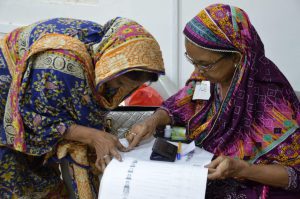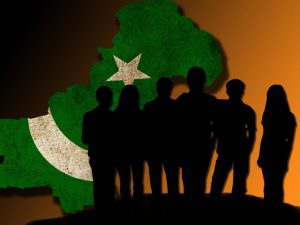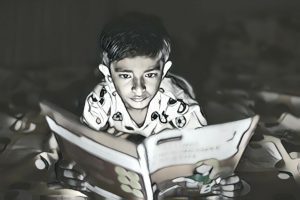For Pakistan to prosper, it must allow its girls to dream big, accomplish bigger
Women must imagine better worlds for themselves, where their occupation is a choice, be it a teacher or a legislator.
For most women in Pakistan, the ability to work and study remains a privilege, not a choice. Many of the women in the labour force are “teaching to be taught” — they join the labour force to manage educational expenses, which financially empowers them, but simultaneously limits their professional growth and choices.
Four out of five Pakistani women are not a part of the labour force. In urban areas, that number leaps to nine out of 10. Only half of the women aged 15 or above can read and write. To proceed towards gender equality in work and education, Pakistan needs structural change that gives women choices beyond teaching to be taught.
How tutoring helped me sustain my education
Ten years ago, when I first entered the (informal) labour force, I did not know how many women worked or studied in Karachi. For me, it was a privilege to receive an education, which is why I was embarrassed to ask my family every time I needed school supplies. It may seem odd, but when education expenses constitute a major proportion of household income, such hesitations are common, at least among young girls.
One day, I confided in my neighbour and best friend about these worries. The conversation led to my participation in another activity common among young girls in our area: private tutoring. I gathered and advertised my services to the children in our neighbourhood, most of whom attended public schools or were homeschooled. I also offered free classes for two weeks as a promotional offer.
I started with a monthly fee of Rs500 for two subjects and gradually increased it to Rs1,500. In high school, I earned up to Rs20,000-30,000 per semester teaching economics. I made twice that amount during my undergraduate years through private tutoring and teaching assistantships. Money from teaching opened up a world of possibilities for me, where I used it not only for educational expenses but also for small luxuries — dining out or taking a bus to the mountains in the northern areas.
Until last year, I thought tutoring was a common practice amongst low and middle-income households limited to urban Pakistan, when I discovered the findings from the Learning and Educational Achievement in Pakistan Schools (Leaps) project. Leaps reported that almost a million women are employed by low-cost private schools in both urban and rural areas, making them the single largest employer of women in Pakistan.
“You educate a woman, you educate a generation”
Like me, many of these women are teaching to be taught. Most of them graduate from secondary education and convert their private tutoring practices into schools in the area. Leaps found that 42 per cent of students in Pakistan attend private schools, of which 3.78pc are small businesses with monthly fees under $5. This work allows women to overcome financial barriers to education, gain financial independence and participate in the labour force despite several gendered barriers, since teaching is considered to be a safe and socially acceptable profession.
Other than the benefit this provides the teachers themselves, it greatly benefits communities and students as well. A Leaps study found that every extra year of an older sister’s education increases the younger brother’s schooling by 0.2 years. I would purport that in more communal living arrangements, these positive spillovers extend beyond family as older “bajis” (sisters) help out cousins and neighbours with their coursework. In a country with the second highest rate of out-of-school children in the world, these spillover effects become all the more important.
And so, over a decade after I discovered teaching as a means of financial support, I find that so many women across my country had discovered the same.
But this information makes me both hopeful and apprehensive.
The first among many steps
I am hopeful because it demonstrates that women are grabbing available economic opportunities, no matter the scale. It shows a willingness to join the labour force and gain a source of income which also creates a network of educators that can in turn train others. The will, money, and learning are all forms of women’s agency that represent larger breaks in a patriarchal system.
At the same time, I fear these breaks are neither sustained nor feminist. Why do women have to jump through all these hoops for a basic right like education? And what happens to these women after secondary school or marriage? A 2019 UN Women study in Pakistan found that a 1pc increase in the female fertility rate is associated with a 2.6pc decrease in women’s labour force participation. This means that it is likely that women join the private education sector and then leave or, they stay there — with their career growth remaining stagnant.
I would argue neither situation is ideal.
There are huge costs to women leaving the workforce; for example, it costs the US economy $650 billion each year. The economic impact is magnified when we account for women’s unpaid household work, which is reportedly equal to $11 trillion (9pc of global GDP). Then there are also the neglected mental and emotional costs from losing income and financial independence.
On the other hand, with teaching, many women can join and stay in the workforce, which is an incredibly important step. But it is a first step. Scholars argue that women’s participation needs to expand beyond occupations restricted by gender roles as they perpetuate gender inequality. This means that women’s circumstances can only improve drastically if there is structural change.
Imagining a better tomorrow
So what now? First, it is the state’s responsibility to provide women with both employment opportunities as well as the conditions to avail these opportunities. This ranges from providing grants to schools and improving infrastructure, to social change efforts such as awareness campaigns and incentivisation.
Moreover, teaching may not open the same doors for someone in a rural village as it did for me, someone from a middle-class household in the largest city of Pakistan. Any remedial interventions must account for intersectionality and must not be gender-blind.
Second, the responsibility falls at the family level, especially the head of the household, to be a bolster and not a barrier for women pursuing better career opportunities, better pay, and better lives.
And, finally, there is something the women can do as well.
I remember in high school, jokes about my impending marriage would rattle me. I knew marriage is not always a closed door, but it very well could be. And I had so much work to do, even if I wasn’t sure what this work was or if it was even possible. But imagining worlds where I could be someone beyond my existing options gave me hope. So I kept teaching to be taught, but I imagined possibilities beyond. And I believe that played an immense role in materialising some of my educational ambitions.
I also know women who stayed the teacher, either by choice or by compulsion — women, who would make excellent legislators, engineers, sociologists and more. Their tutoring remains a radical resistance in a society designed to defeat them. But this resistance can wear thin if it does not grow, and perhaps the first step to this growth is to imagine. Women must imagine better worlds for themselves, where their occupation is a choice, be it a teacher or a legislator. Being able to imagine better lives gives us hope, and hope paves way for action and change. As Fehmida Riaz wrote in the aftermath of 1971:
“Come my countrymen, dance a dance of anger, of unfurling imagination, of grief and infamy, of a hope repentant. Tear off all your vestments of convenience.”
Even if our imagination seems impossible, and the act of imagining is inconvenient (and often very costly), we must not stop imagining better lives. Amongst ongoing efforts to improve living conditions for women in Pakistan, this envisioning is something every woman can do — to continue having big dreams, big hopes and perceiving lives beyond the teacher and the taught.
This article uses data from the Learning and Educational Achievement in Pakistan Schools (LEAPS) project. LEAPS involves one of the largest data collection exercises in Pakistan conducted between 2003 and 2011 in 112 randomly sampled villages in Punjab, Pakistan. Major findings about teacher employment also come from a study conducted in an urban schooling system in Punjab, which has gender disaggregated data on teachers, schools, and households
Haleema Hasan is a graduate student at Georgetown University’s McCourt School of Public Policy. She is interested in gender and intersectional development and policy. She has also worked as a consultant for the public sector and as project manager and researcher in areas ranging from public financial management, labor wages and rural development. She holds a bachelor’s degree in Economics from the Lahore University of Management Sciences.





